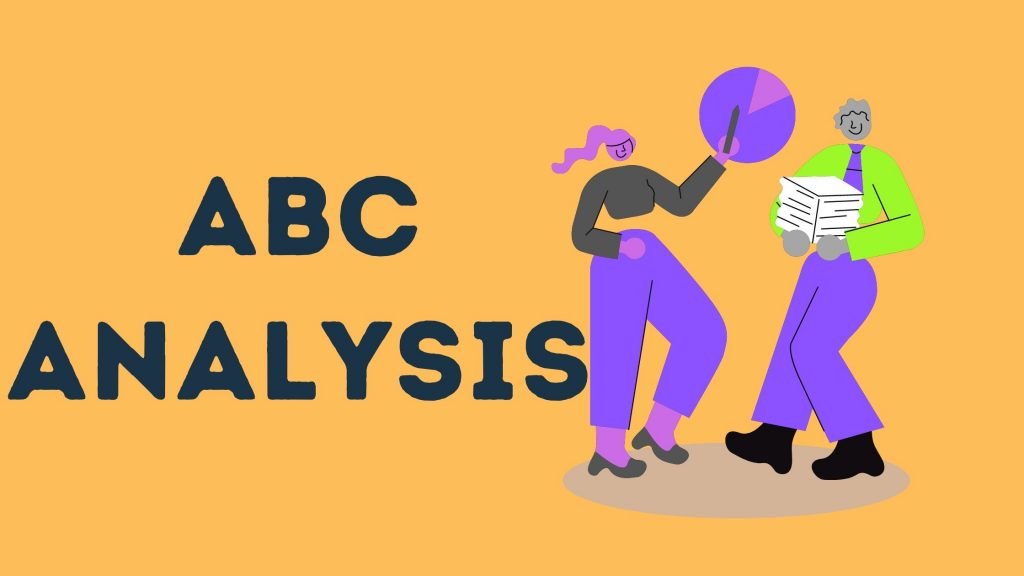
ABC Analysis means categorizing your customers as A-B-C, in that order of priority, based on defined characteristics. Thus, based on their overall revenue contribution, you will get insights on the kind of customer personas you should divert your resources.
This concept is based on the famous 80/20 rule or the Pareto Principle, which states that –
“Roughly 80% of consequences come from 20% of causes”
This concept can be extended to customer segmentation to help fine-tune your business development strategy and sales framework. Thus, we can reframe the Pareto Principle as –
“20% of your customer base makes up to 80% of your total sales”
Thus, you can apply the ABC analysis to segment your customers as per their contribution to the revenues. Here’s an ABC analysis example:
Group 10% of customers who make up 70% of the sales. This category contributes the most value to your profit numbers and must be focused on for your business development and lead generation.
Group the next 20% of customers who make up 20% of the sales. This category represents the potential to nurture these leads for upselling and cross-selling to improve the Average Revenue Per User from them.
Group the next 70% of the customers who make up to 10% of the sales. This category can be automated for your sales strategy since they consist of typically smaller transactions. You can also equip your support team with automated tools so that they focus more on Category A and B.
You can use other metrics for customer segmentation apart from revenues to gain more insights like geography, demographics, churn, the number of transactions, product categories, or any other north star metric that your sales strategy values.

Conducting ABC analysis on your customer dataset is an easy excel game. Here, we have listed steps that you can follow in case you’d like to segment based on revenues:
STEP-1: Prepare a table of your customers and the revenues they brought in.
STEP-2: Calculate the total turnover by summing up all the revenues brought by these customers
STEP-3: Determine how much is the 70%, 20%, and 10% of your total turnover
STEP-4: Determine a sum of customers from the top whose total turnover is equal to 70% of the total turnover received. Label it as Category-A.
STEP-5: Similarly, calculate the sum of the next set of customers whose total turnover is equal to 20% of the total turnover. Label it as Category-B.
STEP-6: The rest of the customers left would make up for the last 10%. Label it as Category-C.

While each customer is valuable, with ABC analysis, you will have better clarity about the customers whom you should be focusing on in terms of your business development strategy. This will help you further strategize resource allocation in terms of support, business development, sales, and marketing.
Here’s an ABC analysis example in customer segmentation based on sales revenue, and how to interpret them to improve your sales strategy:
Category-A customers contribute the most value to your profit numbers. Hire a UX researcher to draft a user persona in terms of demographics, company financials, problem statement, customers whom they serve, value propositions, etc. You can align your business development strategy and lead generation efforts accordingly.
Category-B customers represent a potential where you can nurture these leads for upselling and cross-selling. Identify key areas where you can serve them with your other products or sell affiliates. This will help you improve the Average Revenue Per User from them.
Category-C customers represent an opportunity to cut costs using automation since they consist of typically smaller transactions. Classify these purchases and place bots to conduct the sales pitch rather than employing dedicated sales professionals. You can also equip your support team with automated tools so that they can focus more on Category A and B.

After successfully segmenting your customers, you direct your resources for implementing your sales strategy towards Category-A and B. Here’s how you can do that:
Focus your lead generation efforts on targeting Category-A customer personas. Draft a personalized sales pitch and focus on converting for in-person meetings and demos than mere emails.
Draft sales pitch to cross-sell or upsell with other products available in your catalog. Check the conversions and improvement in sales numbers – and group these products. Perform lead generation tactics on the customer personas that you could successfully upsell. Iterate your sales strategy, pitch, and products to bring these customers to Category-A.
LeadsChilly, can help you implement ABC analysis and automate your lead generation efforts. If you’re a B2B sales professional, get equipped with campaign management, data segregation, and derive insights for your lead generation efforts. Sign up for the 7days trial today.